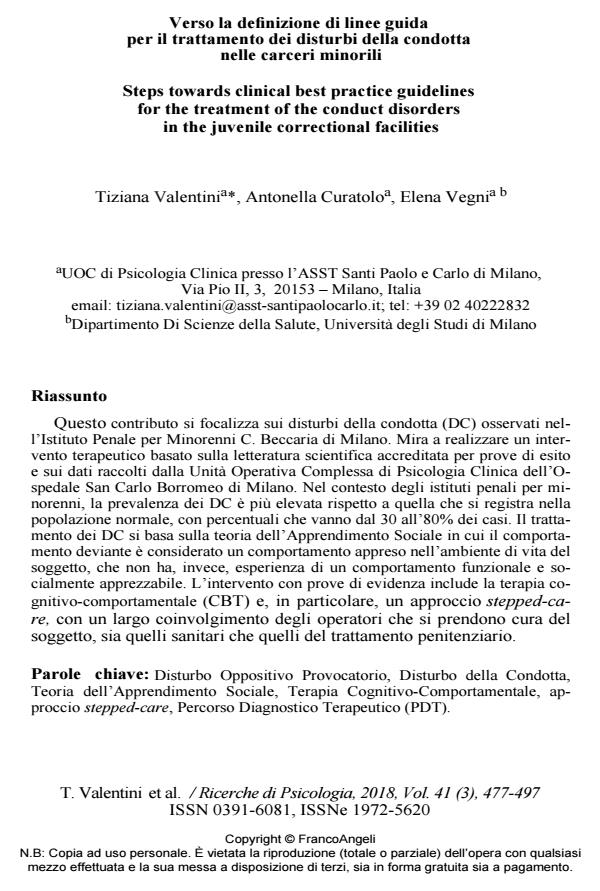Verso la definizione di linee guida per il trattamento dei disturbi della condotta nelle carceri minorili
Titolo Rivista RICERCHE DI PSICOLOGIA
Autori/Curatori Tiziana Valentinia, Antonella Curatoloa, Elena Vegnia
Anno di pubblicazione 2018 Fascicolo 2018/3
Lingua Italiano Numero pagine 21 P. 477-197 Dimensione file 96 KB
DOI 10.3280/RIP2018-003010
Il DOI è il codice a barre della proprietà intellettuale: per saperne di più
clicca qui
Qui sotto puoi vedere in anteprima la prima pagina di questo articolo.
Se questo articolo ti interessa, lo puoi acquistare (e scaricare in formato pdf) seguendo le facili indicazioni per acquistare il download credit. Acquista Download Credits per scaricare questo Articolo in formato PDF

FrancoAngeli è membro della Publishers International Linking Association, Inc (PILA)associazione indipendente e non profit per facilitare (attraverso i servizi tecnologici implementati da CrossRef.org) l’accesso degli studiosi ai contenuti digitali nelle pubblicazioni professionali e scientifiche
Questo contributo si focalizza sui disturbi della condotta (DC) osservati nell’Istituto Penale per Minorenni C. Beccaria di Milano. Mira a realizzare un intervento terapeutico basato sulla letteratura scientifica accreditata per prove di esito e sui dati raccolti dalla Unità Operativa Complessa di Psicologia Clinica dell’Ospedale San Carlo Borromeo di Milano. Nel contesto degli istituti penali per minorenni, la prevalenza dei DC è più elevata rispetto a quella che si registra nella popolazione normale, con percentuali che vanno dal 30 all’80% dei casi. Il trattamento dei DC si basa sulla teoria dell’Apprendimento Sociale in cui il comportamento deviante è considerato un comportamento appreso nell’ambiente di vita del soggetto, che non ha, invece, esperienza di un comportamento funzionale e socialmente apprezzabile. L’intervento con prove di evidenza include la terapia cognitivo- comportamentale (CBT) e, in particolare, un approccio stepped-care, con un largo coinvolgimento degli operatori che si prendono cura del soggetto, sia quelli sanitari che quelli del trattamento penitenziario.
Parole chiave:Disturbo Oppositivo Provocatorio, Disturbo della Condotta, Teoria dell’Apprendimento Sociale, Terapia Cognitivo-Comportamentale, approccio stepped-care, Percorso Diagnostico Terapeutico (PDT).
Tiziana Valentinia, Antonella Curatoloa, Elena Vegnia, Verso la definizione di linee guida per il trattamento dei disturbi della condotta nelle carceri minorili in "RICERCHE DI PSICOLOGIA " 3/2018, pp 477-197, DOI: 10.3280/RIP2018-003010